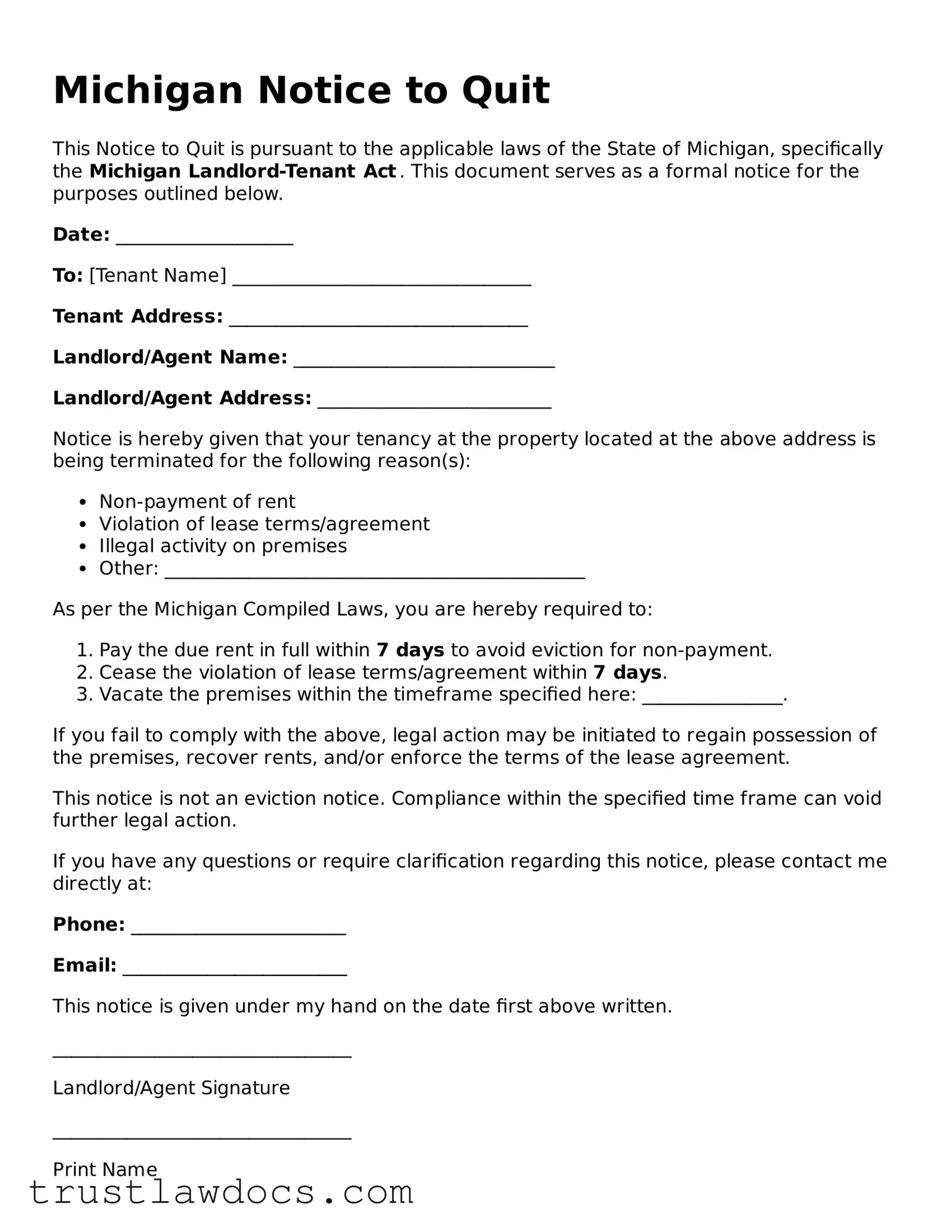Michigan Notice to Quit
This Notice to Quit is pursuant to the applicable laws of the State of Michigan, specifically the Michigan Landlord-Tenant Act. This document serves as a formal notice for the purposes outlined below.
Date: ___________________
To: [Tenant Name] ________________________________
Tenant Address: ________________________________
Landlord/Agent Name: ____________________________
Landlord/Agent Address: _________________________
Notice is hereby given that your tenancy at the property located at the above address is being terminated for the following reason(s):
- Non-payment of rent
- Violation of lease terms/agreement
- Illegal activity on premises
- Other: _____________________________________________
As per the Michigan Compiled Laws, you are hereby required to:
- Pay the due rent in full within 7 days to avoid eviction for non-payment.
- Cease the violation of lease terms/agreement within 7 days.
- Vacate the premises within the timeframe specified here: _______________.
If you fail to comply with the above, legal action may be initiated to regain possession of the premises, recover rents, and/or enforce the terms of the lease agreement.
This notice is not an eviction notice. Compliance within the specified time frame can void further legal action.
If you have any questions or require clarification regarding this notice, please contact me directly at:
Phone: _______________________
Email: ________________________
This notice is given under my hand on the date first above written.
________________________________
Landlord/Agent Signature
________________________________
Print Name
Note: This template is provided as a general guide and is not intended as legal advice. Specifics can vary by case or location, and legal counsel should be sought for individual issues.
